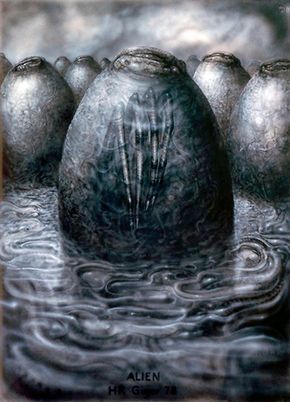Xenomorph Life Cycle: The Egg
For the crew of the Nostromo, it all began with a single egg. So, in order to chart the xenomorph's complex and vicious life cycle, we'll begin there as well.
At first glance, xenomorph eggs closely resemble the amniotic eggs of birds, reptiles and amphibians here on Earth. These vessels protect and nourish an organism during the earliest, frailest stages of development. The xenomorphic egg also seems to perform this function.
Advertisement
The tough shell offers a level of padded protection, and its leathery flesh (which resembles that of certain fish, amphibian and reptile eggs) may help it to survive exceedingly dry conditions. The interior of the xenomorph egg also appears to contain large quantities of fleshy, nutritious yolk, or deutoplasm. This material sustains the life-form until hatching occurs.
For all these similarities, xenomorph eggs are still thoroughly alien. Terrestrial organisms hatch by breaking, slicing or pushing through their egg's outer membrane. In the case of xenomorph eggs, external stimuli (the presence of a suitable host organism) cause four lips at the top of the egg to peel back like a flower, opening an aperture for the emerging organism.
In the absence of such stimuli, xenomorph eggs remain dormant for extended periods. The protrusion of ropy tendrils from the base raises additional questions: Do these structures merely anchor the egg to the spot, or do they gather nutrients for the growing embryo? Are they secreted resin, or are they alive?
And what emerges from those strange eggs? The alien grotesqueries only multiply.
